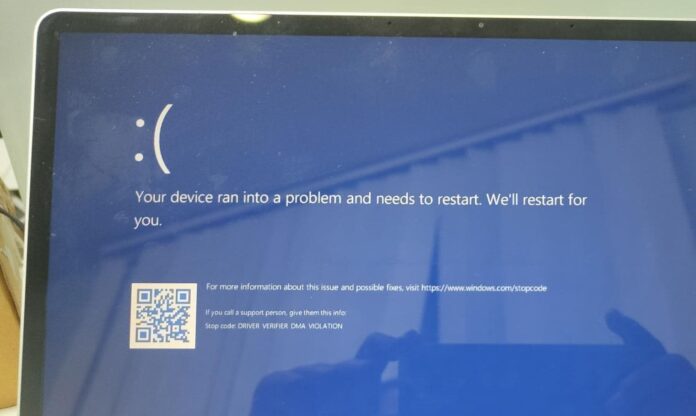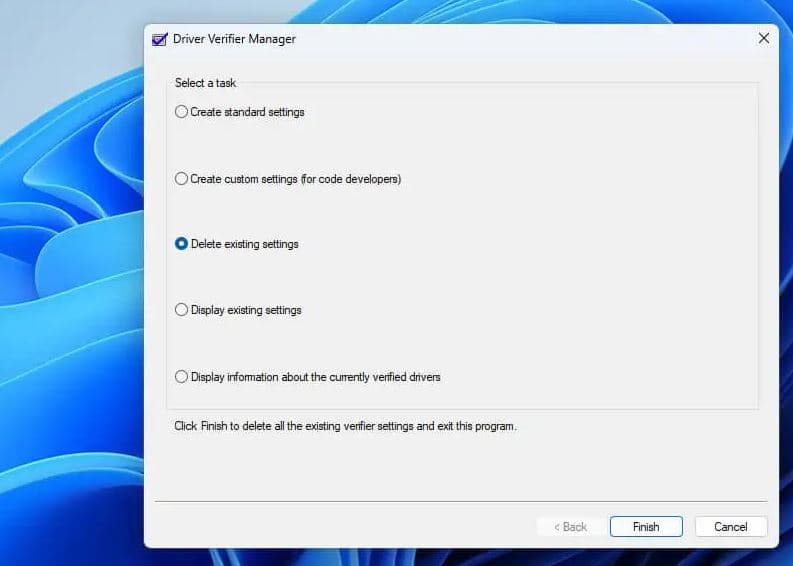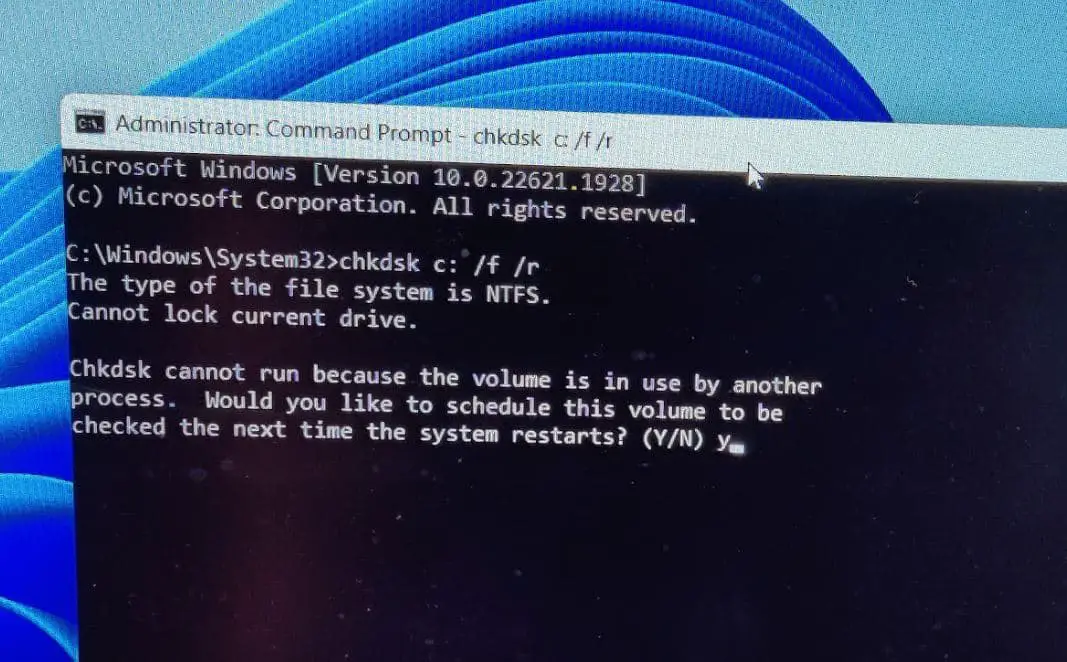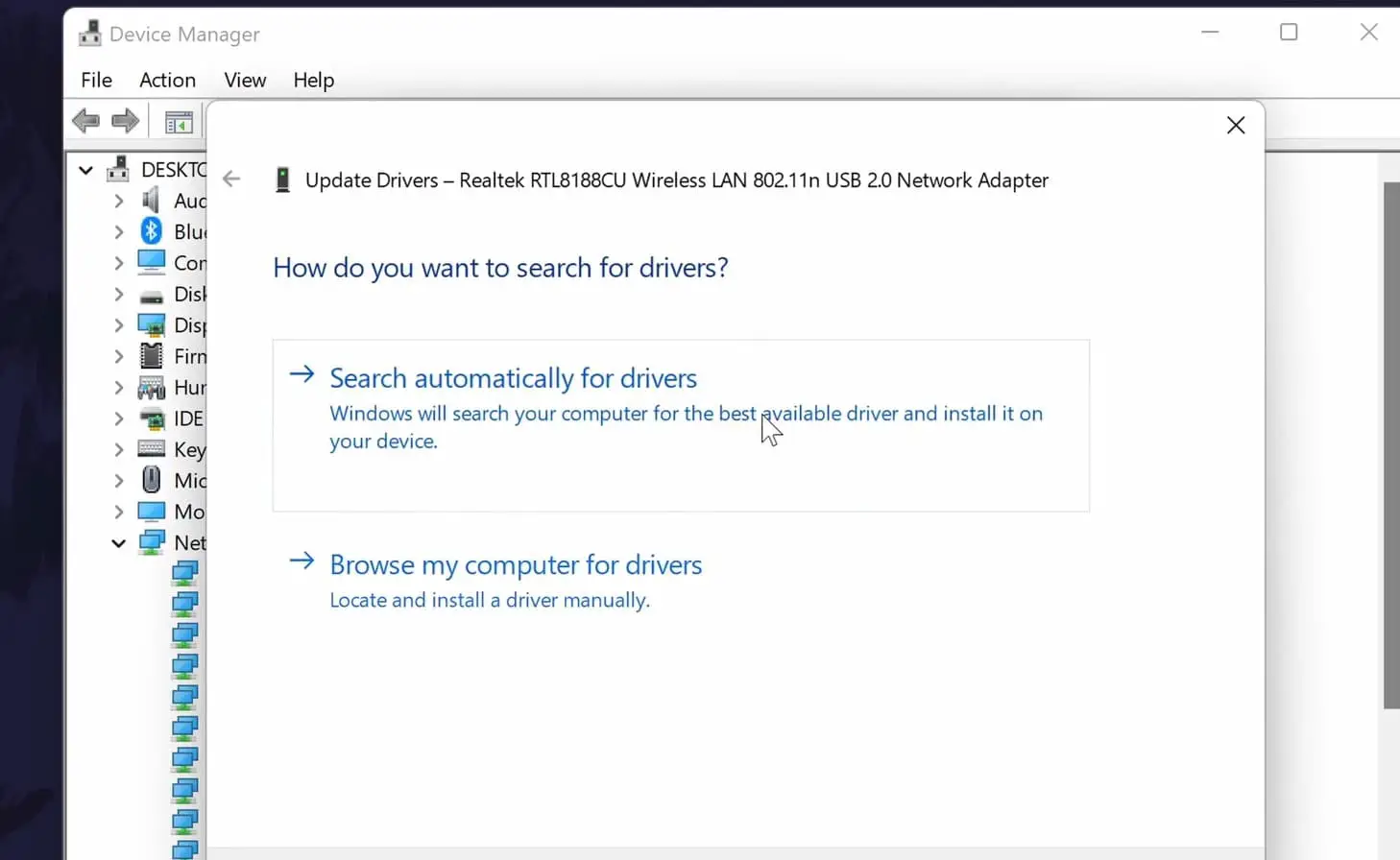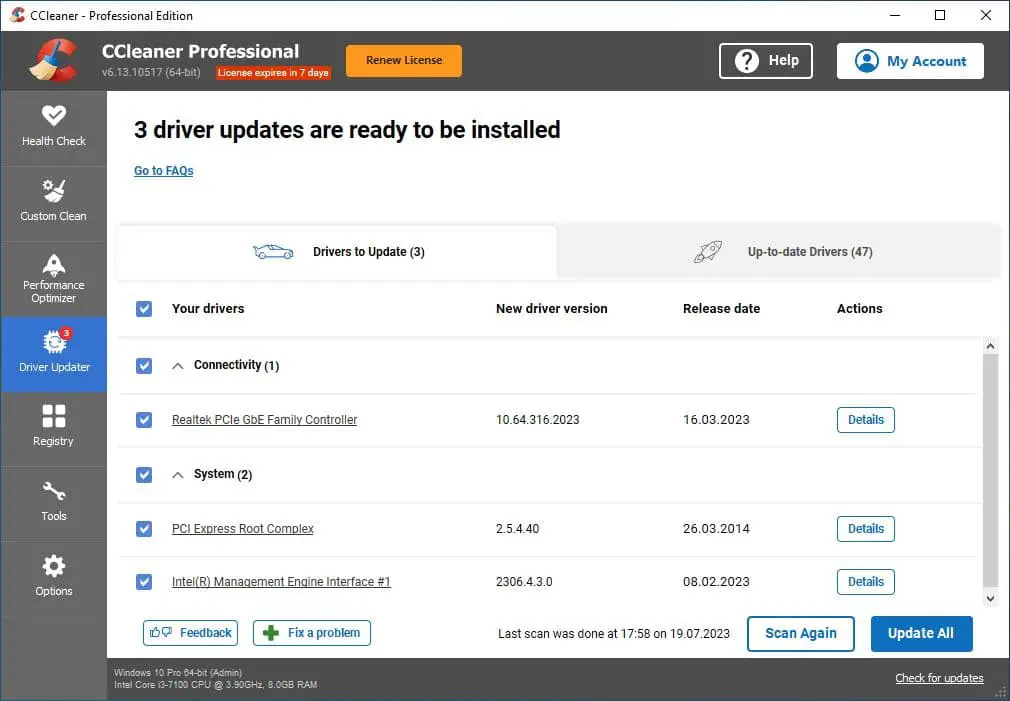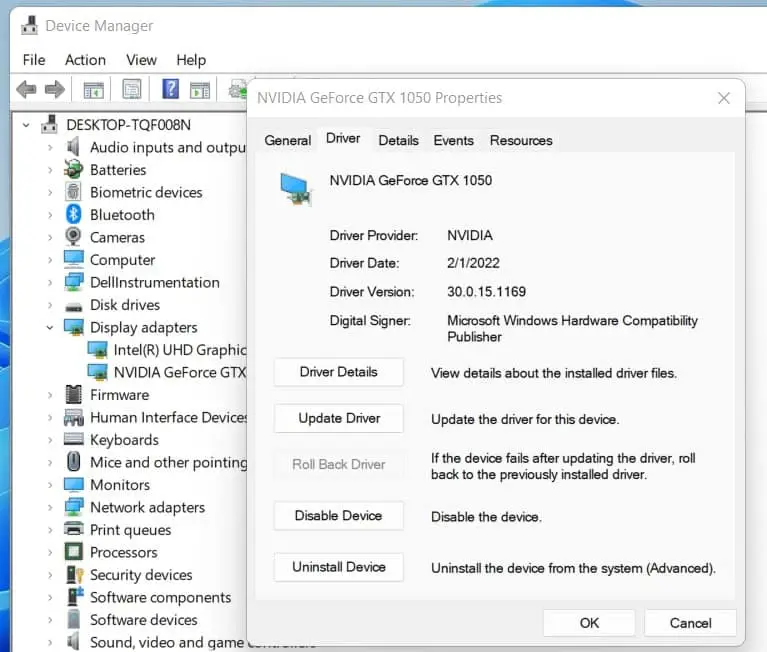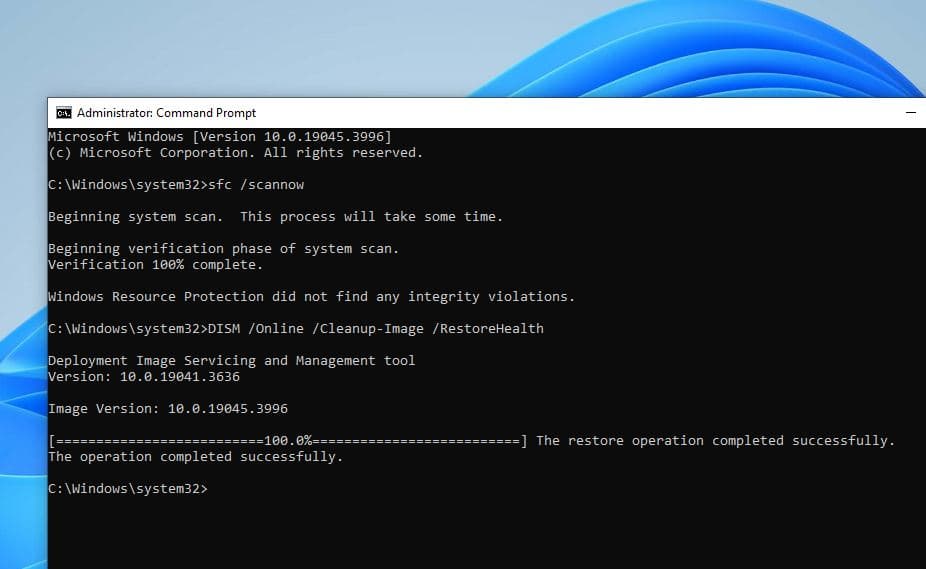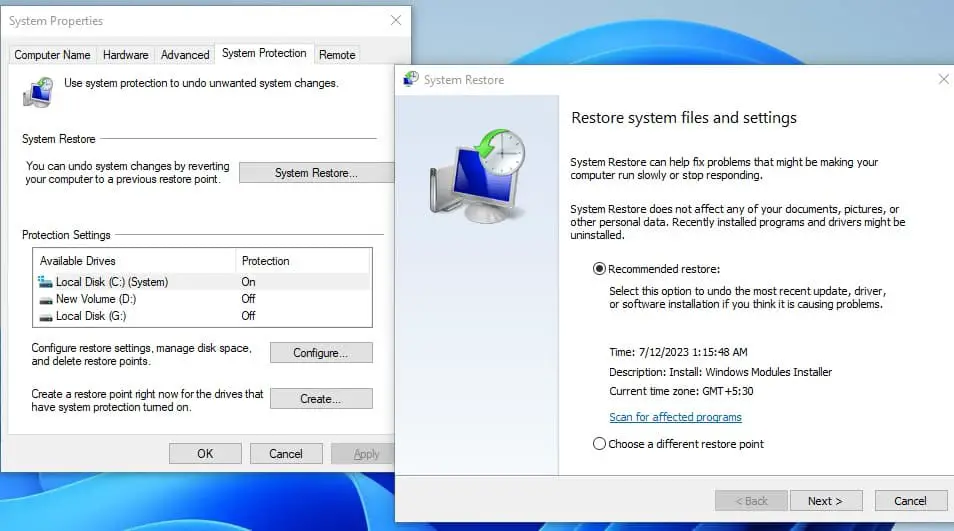The DRIVER VERIFIER DMA VIOLATION error typically occurs due to faulty device drivers or hardware issues related to Direct Memory Access (DMA). Here DMA is a method that allows hardware components to transfer data directly to and from the system memory without involving the CPU. If drivers fail to follow DMA guidelines, it can lead to system crashes, instability displays Blue Screen of Death (BSOD). Outdated or Corrupted Device Drivers, System File Corruption or Hardware Malfunction are common reasons behind this. If you are getting Driver verifier DMA violation error on your HP or Dell computer, apply the solutions listed below.
Driver Verifier DMA Violation
This error usually indicates a problem with a device driver, mostly caused by outdated or corrupted drivers.
- If a device driver is outdated or incompatible with your system, it can trigger DMA violation errors.
- Malfunctioning hardware components such as RAM, hard drives, or peripheral devices may lead to DMA violations.
- Conflicts between different software programs or incompatible software installations can also contribute to DMA violation errors.
- Corrupted system files due to improper shutdowns, malware infections, or disk errors can lead to DMA errors.
Disable Driver Verifier
Driver Verifier is a building tool in Windows 11, useful for identifying faulty drivers. However, misconfigurations or conflicts with certain drivers can accidentally trigger DMA violations. Disabling Driver Verifier temporarily allows you to isolate its impact on system stability and determine if it’s the root cause of the error.
- Press Windows key + R, type verifier, and click ok, to open Driver Verifier Manager,
- Select the radio button Delete existing settings and click on Finish.
In addition, you can open the command prompt as administrator and run verifier /reset command to Delete existing settings.
Run Hardware Diagnostics
DMA violation errors can occur due to hardware malfunctions, such as faulty memory modules or failing hard drives, disrupting the data transfer process. Performing hardware diagnostics helps identify any underlying issues with components such as RAM, hard drives, and peripheral devices.
Disconnect External Devices:
External devices such as USB drives, printers, external hard drives, or peripherals may sometimes conflict with system operations, leading to DMA violations. First of all, disconnect all external devices and reboot your device.
Run Memory Diagnostic Tool:
Again Memory issues, such as faulty RAM modules or memory corruption, can lead to different blue screen of death (BSOD) errors. Windows includes a built-in Memory Diagnostic tool that can help identify and diagnose such problems.
- Press the Windows key, type ‘Windows Memory Diagnostic,’ and press Enter to open the tool.
- Choose ‘Restart now and check for problems’ Your computer will restart, and the Memory Diagnostic tool will automatically run a memory test.
- This process may take some time, depending on the size of your memory.
Note: If memory errors are detected, consider replacing faulty RAM modules or consulting with a professional for further assistance in resolving memory-related issues.
Fix Disk errors using CHKDSK (Check Disk):
File system corruption or disk errors can contribute to DRIVER_VERIFIER_DMA_VIOLATION errors. Run built-in CHKDSK utility to scan and repair file system errors, disk corruption, and bad sectors on hard drives.
- First, open the command prompt as administrator, type the command ‘chkdsk /f /r‘ and press Enter. This command instructs CHKDSK to fix errors (/f) and locate bad sectors (/r) on the disk.
- You’ll be prompted to schedule the disk check for the next system restart. Type ‘Y’ and press Enter to confirm.
- Close the Command Prompt and restart your computer to initiate the CHKDSK process. Depending on the size and health of your disk, this process may take some time to complete.
Update Device Drivers
Device drivers enable communication between the operating system and hardware devices. Sometimes Outdated or incorrect drivers can lead to incompatibilities, causing the BSOD error. Updating drivers ensures that hardware components function correctly and efficiently, reducing the risk of DMA violation BSOD error.
- Press Win + X and select Device Manager.
- Look for devices with a yellow exclamation mark, indicating issues.
- Right-click on the device and select Update driver.
- Choose Search automatically for updated driver software to let Windows find and install the latest driver.
- After updating the drivers, restart your computer to ensure the changes take effect.
Note: Same way you can update the display (Graphics) driver, Network adapter driver or Audio driver on your computer.
Also, you can use a third-party driver update tool or visit the manufacturer’s website for driver updates.
Try Rollback Drivers
Again New driver updates sometimes introduce unexpected issues. Rolling back to previous driver version can stabilize your system if the BSOD error starts after a recent update. The rollback driver process undoes recent changes that might have caused the DMA violation, offering a quick fix while waiting for a more stable driver release.
- Again use Windows key + X to open the menu and click on Device Manager.
- Right-click on the device whose driver you recently updated, for example Graphics driver.
- Click on Properties and go to the Driver tab.
- If available, click Roll Back Driver and follow the prompts. If the button is greyed out, this option is not available for the selected driver.
Reboot your system to apply changes, and check if this help fix the blue screen error on your device.
Check System Files
Corrupted system files can cause various issues, including BSOD errors. Running System File Checker (SFC) utility scan for and restore corruptions in Windows system files, ensure the system operates smoothly.
- Press the Windows key Search for cmd, right-click on it, and select Run as administrator.
- Type sfc /scannow and press Enter to scan for and restore corrupt system files.
- Wait for the process to complete, it may take some time depending on the system file corruption level, Let the scanning complete 100%.
In addition, run the Deployment Image Servicing and Management (DISM) tool to fix the system image and restore the health of the system, it resolves issues caused by system file corruption.
Again open the command prompt as administrator, type DISM /Online /Cleanup-Image /RestoreHealth and press Enter. Wait for the operation to complete. Once the scanning is complete 100% restart your computer to ensure all changes are applied.
Check for Malware Infection
If the system is infected with a virus or malware can corrupt drivers, system files, and even hardware firmware, leading to BSOD errors. Performing a full system scan with updated antivirus programs or Windows security, detects and removes these malicious programs, and potentially fixes the DRIVER_VERIFIER_DMA_VIOLATION error in Windows 11.
- Press the Windows key, search for and select Windows security,
- Click on Virus & Threat Protection, then Click Scan options and select Full scan for a comprehensive check, then click Scan now.
Also you can use third-party antivirus like Norton, Avira, avast or Bitdefender to perform full system and remove malware infection.
Perform System Restore
System restoration allows you to revert the entire system to a previous state where it was functioning correctly. If all other troubleshooting steps fail to resolve the DRIVER_VERIFIER_DMA_VIOLATION error, restoring the system to a restore point before the error occurred can effectively roll back any problematic changes or configurations. This includes driver updates, system modifications, or software installations that may have triggered the BSOD error.
- Press the Windows key, Search for Create a restore point, and click on it.
- Under the System Protection tab, click System Restore.
- Follow the prompts to select a restore point before the error starts occurring.
Install latest Windows Updates
Microsoft regularly drops Windows updates, with patches for known bugs, security enhancements, and system improvements that can directly or indirectly resolve Blue screen of death errors. Regularly updating Windows is crucial for maintaining system stability, security, and performance.
- Click the Start menu, and select Settings (the gear icon).
- Go to Windows update and hit check for updates button.
- If updates are available, click ‘Download and install’ Ensure your device remains connected to power and the internet during this time.
- Some updates might require a restart to complete the installation process. Save any open work and restart your device when prompted.
Did the above solutions help fix DRIVER VERIFIER DMA VIOLATION error? Let us know in the comments below.
Also read;
